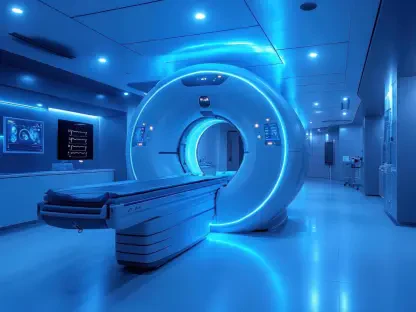In a world where millions struggle to access timely medical attention, a startling statistic emerges: over 30 million Americans lack adequate healthcare coverage, often delaying critical care until emergencies arise, leaving many in dire situations. Picture an elderly woman in a rural community, unable to travel for routine checkups, or a low-income family skipping dental visits due to cost. These are not isolated stories but part of a systemic challenge that leaves gaps in care unfilled. Yet, amid this struggle, a wave of healthcare startups is rising, armed with technology and bold ideas to transform how patients receive support and treatment.
The significance of this movement cannot be overstated. Healthcare startups are not just tinkering at the edges; they are addressing deep-rooted issues like rising costs, limited access, and inefficiencies that plague traditional systems. With chronic diseases on the rise and an aging population demanding more personalized solutions, these innovators are stepping in to redefine patient care. Their work promises not only better outcomes but also a future where equity and efficiency are no longer distant goals. This exploration dives into why this boom matters and how it’s reshaping the landscape for both patients and providers.
Why Is the Healthcare Startup Surge Turning Heads?
A seismic shift is underway in the healthcare sector, capturing attention across the board. Startups are emerging at a rapid pace, fueled by a pressing need to solve problems that have long frustrated patients and professionals alike. From urban centers to remote areas, the demand for innovative solutions is palpable as traditional systems struggle to keep up with modern challenges. Investors, policymakers, and communities are taking notice, recognizing that these companies could hold the key to a more responsive and inclusive framework.
This surge isn’t happening in a vacuum. The influx of capital—evidenced by funding rounds like Sensi.AI’s $45 million Series C—signals a strong belief in the potential of these ventures to disrupt outdated models. Beyond financial backing, the spotlight on startups stems from their ability to tackle niche yet critical issues, such as aging care and preventive health, which have often been overlooked. Their bold approaches are sparking conversations about what healthcare could and should look like in the years ahead.
Moreover, the public’s growing frustration with long wait times and inaccessible services has amplified interest in these new players. As stories of delayed diagnoses or unaffordable treatments circulate, startups offering real-time solutions or cost-effective tools are seen as a beacon of hope. This momentum reflects a broader cultural shift toward embracing technology as a means to bridge longstanding divides in care delivery.
The Critical Demand for Change in a Flawed Healthcare Structure
Beneath the excitement surrounding healthcare startups lies a stark reality: the existing system often fails to serve vast segments of the population. Rising costs continue to burden families, with many unable to afford even basic services, while rural and low-income areas face persistent shortages of providers. These systemic flaws create a vicious cycle of delayed care and worsening health outcomes, particularly for vulnerable groups like the elderly or those with chronic conditions.
The urgency for innovation is further underscored by demographic trends. With the elderly population projected to grow significantly from 2025 to 2030, the strain on resources is set to intensify. Add to this the escalating prevalence of conditions like diabetes and heart disease, and the need for scalable, affordable solutions becomes undeniable. Startups are positioned as vital agents of change, offering fresh perspectives on how to address these mounting pressures.
Equity remains another pressing concern driving the call for reform. Disparities in access—whether due to geography, income, or disability—mean that certain communities are disproportionately affected by gaps in service. By focusing on tailored interventions, emerging companies are beginning to challenge these inequities, aiming to ensure that quality care isn’t a privilege but a universal standard. This mission is what makes their role so pivotal in today’s landscape.
Groundbreaking Approaches Redefining Patient Experiences
Healthcare startups are carving out transformative paths by harnessing cutting-edge tools to address diverse needs. One striking area is the use of artificial intelligence to personalize and streamline care. Companies like Sensi.AI deploy audio technology to monitor aging adults at home, ensuring safety and independence, while Foundation Health, backed by a $20 million Series A round, uses AI to optimize pharmacy operations, cutting down on administrative delays and enhancing patient service.
Another powerful focus is on preventive measures and early detection, which can dramatically alter health trajectories. Oral Genome, for instance, targets underserved Medicaid patients in Pennsylvania with salivary testing that identifies risks for oral and systemic issues like diabetes in real time. Similarly, Previvor Edge integrates genetic testing and imaging into a cancer prevention platform, empowering individuals to act before conditions escalate, a mission supported by $3.3 million in pre-seed funding.
Access for marginalized groups also takes center stage in these innovations. Startups are zeroing in on populations often left behind, such as individuals with intellectual and developmental disabilities, through initiatives like Oral Genome’s pilot programs. Meanwhile, Onos Health, with $6.3 million in Seed funding, leverages AI to improve behavioral health decisions for health plans, ensuring quicker, more effective care pathways for those in need. These efforts highlight a commitment to inclusivity that traditional systems have struggled to achieve.
Perspectives from the Field: Real Stories, Real Change
To understand the true impact of these advancements, insights from industry leaders provide a compelling lens. Dr. William Oh of Previvor Edge has emphasized the profound difference early cancer detection can make, noting, “Identifying risks before they become crises saves lives and reduces the burden on families and systems.” Such expert voices lend weight to the idea that proactive solutions are not just innovative but essential for sustainable progress.
Real-world stories further illustrate the human side of this revolution. Consider a Medicaid patient in Pittsburgh benefiting from Oral Genome’s instant saliva test during a routine dental visit. For the first time, immediate feedback on gum disease risk allowed for prompt intervention, avoiding a potential emergency. These personal accounts underscore how technology can turn abstract concepts into tangible improvements in daily life, especially for those historically underserved.
Investor confidence also speaks volumes about the credibility of these initiatives. The substantial funding rounds, such as Sensi.AI’s $45 million Series C, reflect a shared belief among financial backers that these startups are not mere experiments but catalysts for lasting change. Rafael Rondon of North American Dental Group adds another layer, highlighting, “Oral health is a gateway to overall wellness—addressing it early prevents cascading issues.” Together, these perspectives paint a picture of an industry on the cusp of transformation.
Actionable Steps to Engage with Cutting-Edge Healthcare Solutions
For those looking to tap into this wave of innovation, practical steps can bridge the gap between awareness and action. Patients are encouraged to explore technology-driven options tailored to their needs, such as Sensi.AI’s home monitoring for elderly relatives, which offers peace of mind through non-invasive support. Researching local programs or consulting with healthcare providers can uncover accessible tools that align with specific circumstances.
Providers and health plans, on the other hand, stand to gain by forging partnerships with innovators. Collaborating with entities like Foundation Health to streamline pharmacy processes or integrating Onos Health’s behavioral health tools can yield significant cost savings and better care coordination. Taking the initiative to pilot such solutions within local systems can pave the way for broader adoption, ultimately benefiting entire communities.
Staying informed about emerging developments is equally crucial for all stakeholders. Following pilot projects, like Oral Genome’s work in Pennsylvania, provides insight into how these models might expand to other regions. Connecting with community health organizations or attending industry updates can keep individuals and professionals abreast of opportunities to participate in or advocate for these transformative programs, ensuring that the momentum of change continues to build.
In reflecting on the strides made by healthcare startups, it is evident that their impact has already begun to reshape patient care in profound ways. Their focus on technology, prevention, and access has tackled some of the most persistent challenges in the industry. Looking ahead, the next steps involve scaling these solutions through wider partnerships and public support, ensuring that innovations reach those who need them most. Continued investment and collaboration stand as the cornerstone for turning today’s breakthroughs into tomorrow’s standard of care.









